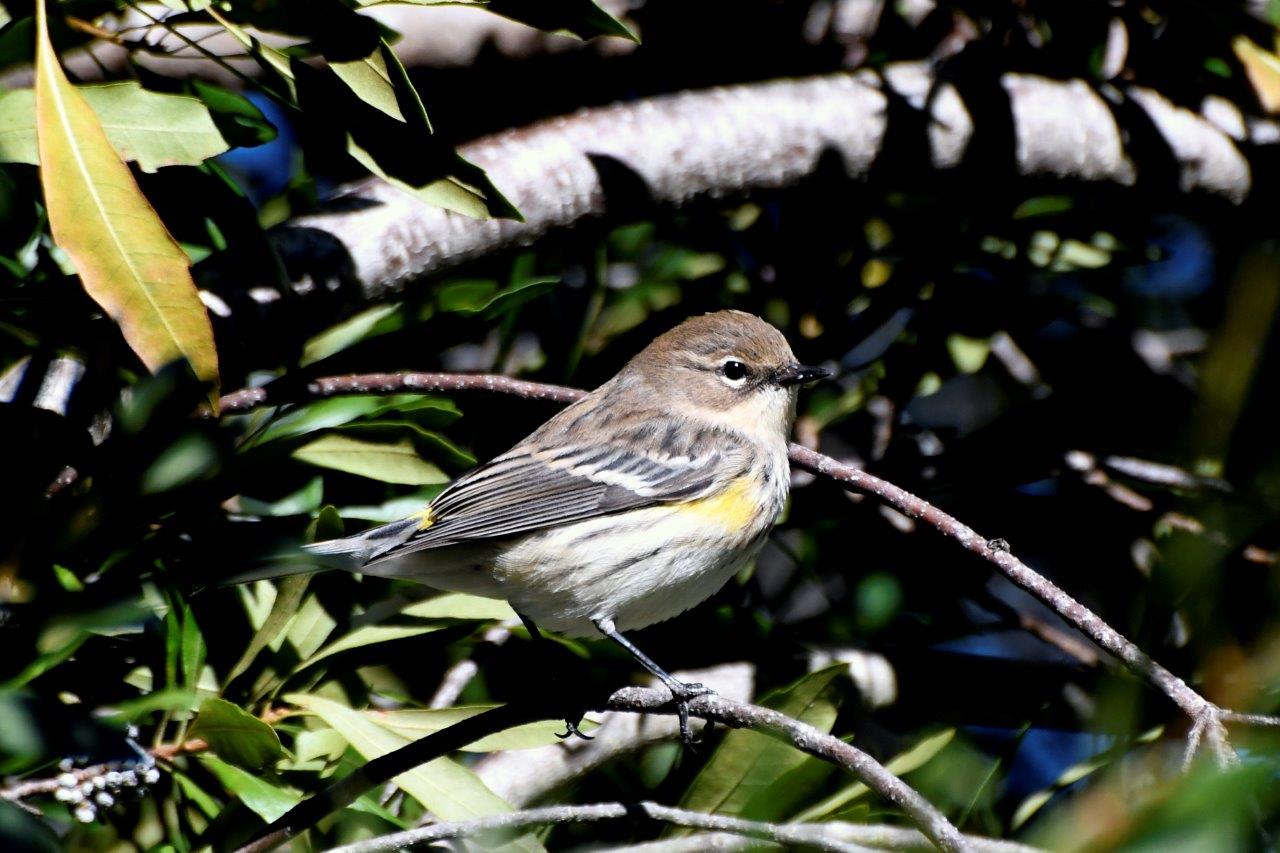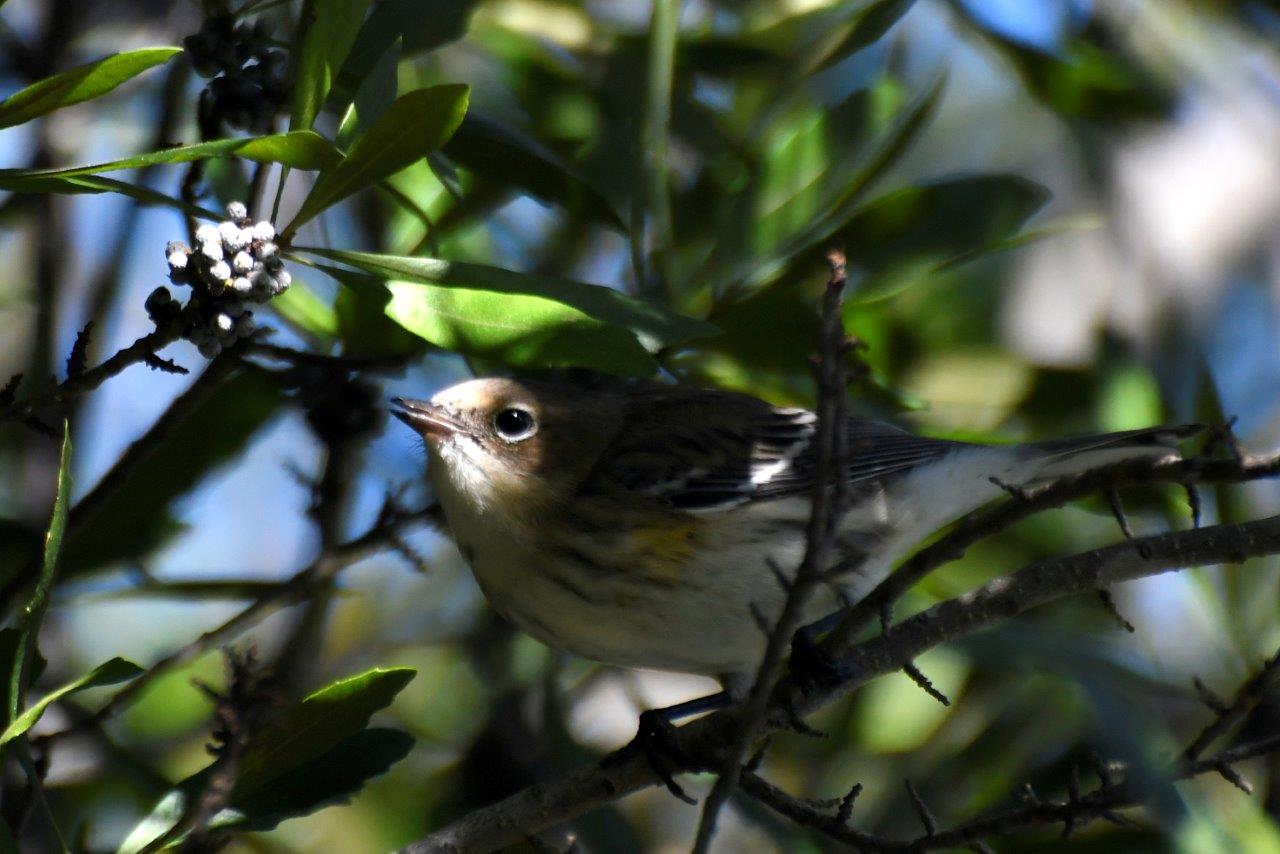 By Mary Reid Barrow Photos by Robert Brown
By Mary Reid Barrow Photos by Robert Brown
Yellow-rumped warblers are making their way into town these days from their northern nesting grounds. They are gathering for your winter warbler viewing pleasure.
A big flock arrived in Robert Brown’s wax myrtle bush recently. Robert said he had a hard time taking these photos because the birds are such busy feeders, flitting from branch to branch to dine on the tough, waxy, whiteish wax myrtle berries.
“The zippy little scamps don’t make it easy,” Robert said.
A mixture of black, white and gray with yellow patches on either side and, yes, yellow rumps, these active little birds are about the only warbler that graces us with their presence in winter.
They can stop their long migration south when they come across our wax myrtle bushes here in the mid-Atlantic . Most other warblers eat only insects so they must continue to warmer areas as insects die off with the cold weather.
Yellow-rumps don’t turn down insects if they are still here. And true to the birds’ jitterbug style, they dart in and out of the bushes snagging insects on the wing, just as though they were flying wax myrtle berries.
But when the insects leave, the yellow-rumpeds just tell them adios. We will be fine without you, thank you!
The dainty birds have cast-iron stomachs and without the insects, they just turn to dining on waxy white wax myrtle berries that happen to also be as hard as little rocks .
Yellow-rumpeds can often be heard before they are seen as they flit about in the myrtles, looking for beries and making clicking “titch, titch, titch” sounds.

Yellow-rumped warblers are divided into two subspecies, Audubon’s warblers that live on the West Coast and myrtle warblers that, as their name implies, live here on the East Coast and dine on wax myrtles.
Wax myrtles, natives here, are often also called bay berries. Old fashioned bayberry candles were traditionally made from wax that was collection from the bay berries themselves. ( I read it took about 15 pounds of bayberries to make I pound of wax! )
Fortunately for the warblers real bayberry candles are few and far between and there are plenty of berries for the yellow-rumpeds.
And the colder it gets, the more yellow-rumpeds you will have the pleasure of seeing this winter.
Do you have a favorite tree or plant with a story to tell? What relationships have you observed between plants and critters? Who eats whom? Who has babies where? Send an email to maryreid@lrnow.org